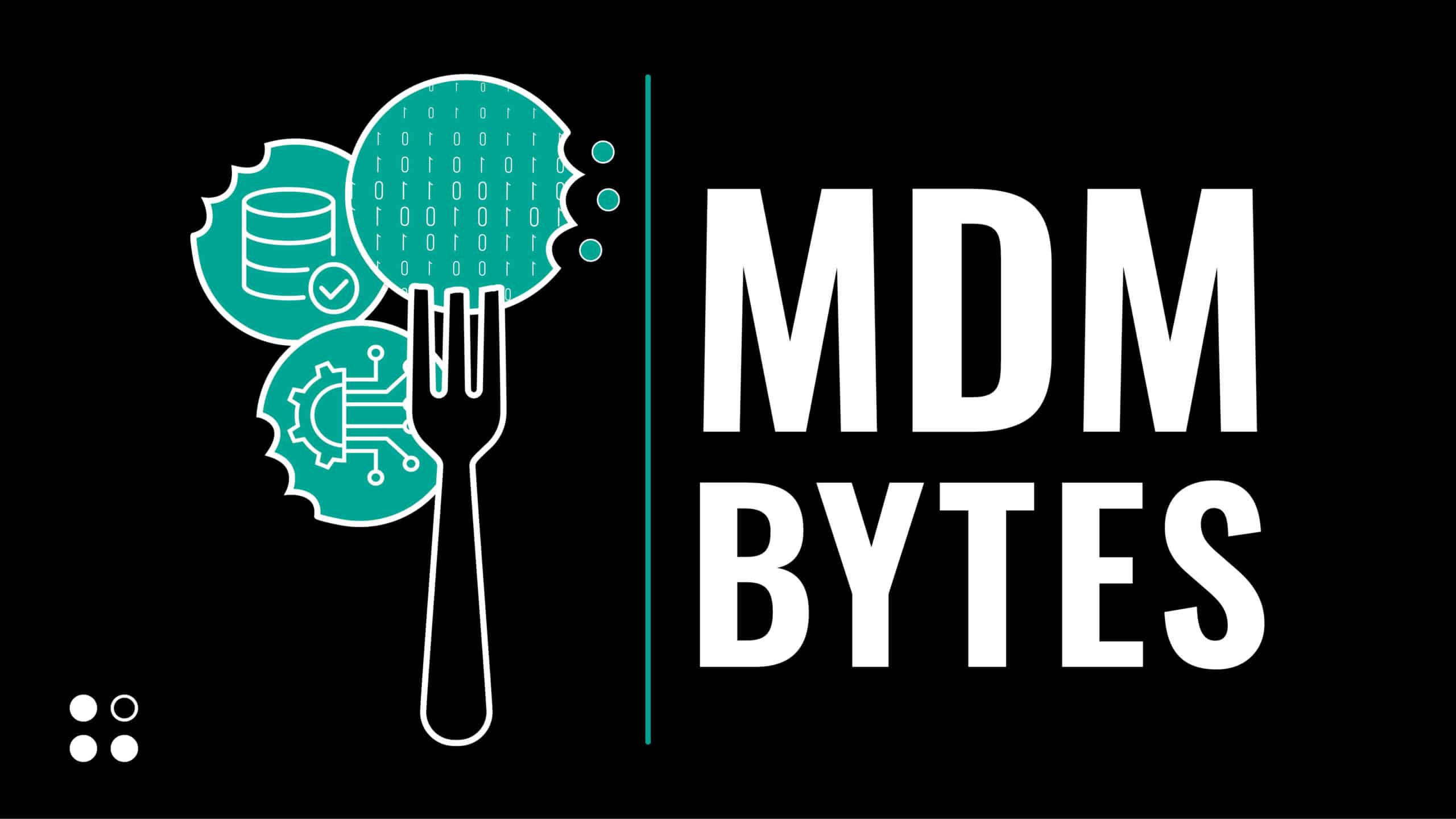Analytics and business intelligence (BI) leaders know enterprise data has the potential to drive their strategic planning, improve their revenue forecasting and exceed key performance indicators (KPIs). But before they can begin translating their insights into actionable information, they must be certain that the underlying enterprise data meets minimum data quality standards.
Because the modern data estate has grown to include legacy applications and databases in addition to cloud apps and services, data is often formatted inconsistently and strewn across departments and systems. In addition to acting as a centralized hub of the organization’s most critical data, master data management (MDM) can help analytics leaders prove the value of their BI programs by helping the business make measurable progress with the KPIs that matter most.
Here are the 5 key business drivers that analytics and BI leaders can improve by implementing MDM.
Delivering Personalized Customer Experiences
Most analytics leaders know that customers today expect anticipatory, personalized experiences across the entire customer journey. And this expectation has only become more prominent as the lines continue to blur between traditionally “consumer” experiences like retail and banking and into enterprise software and other business-to-business (B2B) spaces.
Analytics leaders have traditionally focused on stitching together customer purchases when analyzing customer activity, but this narrow scope of customer data limits personalization opportunities. MDM expands the customer data purview and can help organizations consolidate all customer interactions among sales, support and online channels, building a complete, 360-degree view of their customers.
Armed with a 360-degree view of a customer thanks to MDM, companies can approach personalized customer experiences with things like tailored offers and dynamic pricing. Analysts can review customer purchases, payments and interactions with company representatives — and enrich it with third-party data sources — to anticipate their customers’ future needs and arm their sales team with the data they need to drive conversations forward.
Delivering a personalized experience requires organizations to intimately know their customers through their preferences and purchase patterns. Armed with this knowledge and strong analytical foundation, BI leaders can also look to additional use cases like revenue forecasting, customized product design (including conjoint analysis), bulk pricing offers and more.
New Views of Profitability by Segment, Customer and Product
Revenue and sales reports can generally be produced by most ERP systems, however, determining a company’s true profitability is a different analysis entirely.
Robust profitability analysis ideally factors in the non-inventory data points that are typically housed outside an ERP system, including marketing, customer support and any number of activities not directly connected with product cost. That’s difficult to do when the data for all the activities is separated across multiple data silos with different formats.
Analysts who understand the breadth of interactions that contribute to product success — and, ultimately, to profitability — employ master data management tools and techniques to create holistic views of all the factors that impact profitability.
Net New Sales Related to Activities
Though analytics and BI teams often first look to marketing activity when searching for insights into net new sales, it is hardly the only driver of new business.
By adding data generated by supply chain processes, social media, customer support interactions and seemingly unrelated activities like supplier compliance with orders can shed light on where, when and how new product sales are generated and/or influenced.
Those data sources can only be evaluated together after they’ve been cleaned and validated. Without MDM, analysts or business unit leaders may consider their business performance through their own siloed perspective and draw divergent or even conflicting conclusions.
This can lead to inaccurate forecasts that derail projects and cut budgets for the wrong reasons. Only with a single, complete view of your enterprise’s collective operations can your team produce effective observations with repeatability.
Inventory movement, location, volume
Product inventory data files are often assumed to be accurate and are the default source of information about a company’s products.
Unless they are continually managed and combined with other data throughout the enterprise, they are often unreliable and can easily lead to erroneous conclusions and subsequent poor business performance. Product information comes from multiple business units including planning, design, purchasing, accounting, marketing, sales manufacturing and more.
Deriving a single source of the truth requires all components to be considered and combined in common nomenclature. This needs to be an ongoing process and one that BI and analytics leaders must lead as new data sources come into play or change over time.
MDM is able to deliver this single source of truth on a continuous basis so analysts can avoid any manual data “clean-up” prior to building their reports. Because MDM scans source systems for product data and builds a trusted golden record (including all attributes and metadata), BI leaders know their reports and analytics reflect the full picture.
Armed with high-quality, trusted data, BI teams can go beyond basic inventory management and start looking holistically into the full product life cycle, knowing their analysis has considered the complete picture of the value chain.
Improving Data Quality with Master Data Management
Analytics leaders should care about MDM because it helps improve two critical aspects of their enterprise data: accuracy and availability.
When using a comprehensive, multidomain MDM platform, companies can consolidate data from several silos and source systems, enrich their enterprise data and know their BI teams are working from complete, trusted golden records of their customers, products, locations.
But MDM also enables BI teams to bring all their data elements together into this trusted record in a continuous, low-latency fashion so they can provide those accurate, and more importantly, impactful insights today, not next quarter when it is too late.
Business unit leaders and the C-suite often look to nascent BI programs to demonstrate both revenue potential and risk reduction for their business. And when analytics leaders are bought into master data management, they can make it happen.

Bill O'Kane
A former Gartner analyst, Bill O'Kane was the VP & MDM Strategist at Profisee.











